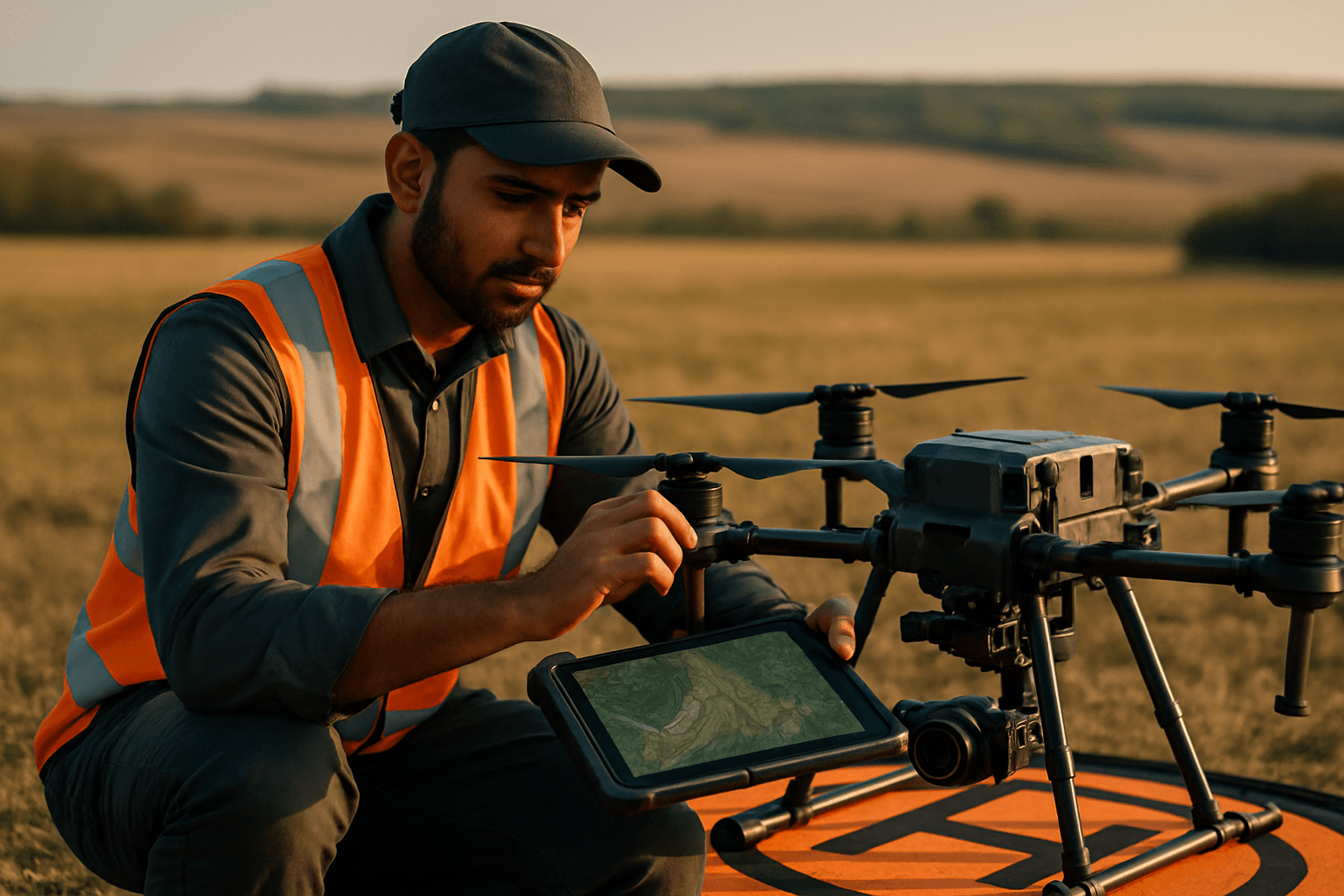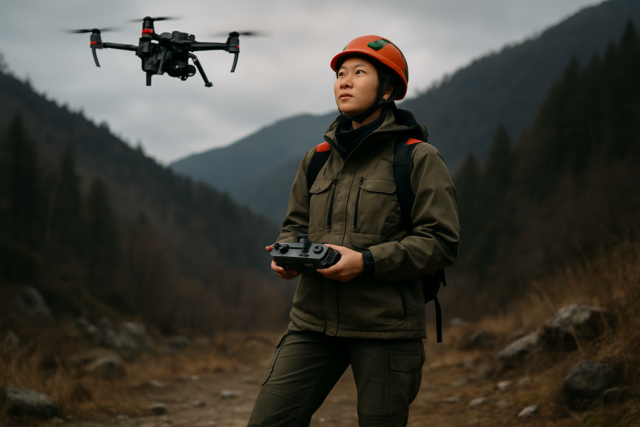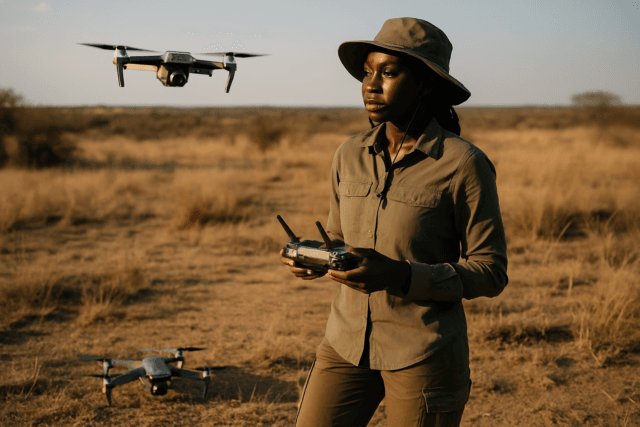The year 2025 marks a pivotal period for commercial drone pilots, as the industry experiences significant growth, technological advancements, and evolving regulatory landscapes. Far from being merely hobbyist gadgets, drones have firmly established themselves as indispensable tools across a multitude of sectors, creating a robust demand for skilled and certified professionals.
Navigating the Regulatory Landscape: FAA Part 107 in 2025
To operate a drone commercially in the United States, obtaining a Remote Pilot Certificate, commonly known as a Part 107 license, from the Federal Aviation Administration (FAA) is mandatory. This certification is the gateway to a rapidly expanding industry and ensures pilots understand critical aspects of drone operation.
Key Part 107 Requirements
In 2025, the requirements for becoming an FAA-certified commercial drone pilot remain stringent to ensure safety and compliance. Prospective pilots must:
- Be at least 16 years old.
- Be able to read, write, speak, and understand English.
- Be in a physical and mental condition to safely operate a small Unmanned Aircraft System (sUAS).
- Pass the “Unmanned Aircraft General – Small (UAG)” aeronautical knowledge exam. This comprehensive test covers topics such as airspace regulations, weather conditions, emergency procedures, and aircraft loading and performance.
- Complete a Transportation Security Administration (TSA) security vetting.
- Register their drone(s) with the FAA if the drone weighs more than 0.55 lbs (250 grams). All drones operated under Part 107 must be registered, regardless of weight. Registration costs $5 and is valid for three years.
Remote ID and Operational Rule Changes
A significant development for 2025 is the full enforcement of Remote ID regulations. As of this year, most drones requiring FAA registration must broadcast a Remote ID signal, acting as a “digital license plate” for identification and location information during flight. Compliance can be achieved through drones with built-in Remote ID capabilities, add-on broadcast modules, or by operating within FAA-Recognized Identification Areas (FRIAs) for non-RID drones.
Furthermore, Part 107 rules in 2025 allow for operations at night, over people, and over moving vehicles without a waiver, provided specific requirements are met. However, airspace authorizations are still necessary for night operations in controlled airspace below 400 feet. The FAA has also refined the waiver process for operations beyond standard regulations, aiming for more efficient responses to requests.
The Expanding Horizon of Commercial Drone Applications
The commercial drone landscape is rapidly evolving, with drones playing a pivotal role in transforming various industries. The global drone market is projected to reach USD 54.6 billion by 2025, indicating significant growth.
Key Industries and Applications
Drones are increasingly integrated into diverse sectors, streamlining processes and enhancing efficiency:
- Agriculture: Drones are used for precision farming, monitoring crop health, and targeted applications.
- Construction & Infrastructure Inspection: Drones equipped with high-resolution cameras, thermal imaging, and LiDAR can detect structural issues faster and more accurately than traditional methods, playing a crucial role in inspecting aging infrastructure.
- Logistics & Delivery: 2025 is seeing an expanded rollout of drone delivery services for groceries, medical supplies, and packages, particularly in niche markets like offshore industries and remote areas during emergencies.
- Public Safety & Emergency Response: Drones are becoming critical tools for first responders, law enforcement, and disaster relief, assisting in assessing situations, tracking suspects, and delivering medical supplies.
- Filmmaking & Entertainment: Drones deliver cinema-quality visuals at a fraction of the cost, and are used for events like drone light shows.
- Energy: Drones are vital for monitoring and inspecting energy infrastructure, including pipelines and power lines.
- Real Estate: Aerial photography and videography for property listings remain a strong application.
Advancements Driving Growth
Several technological advancements are propelling the commercial drone industry forward:
- AI and Machine Learning: AI-powered drones can make real-time decisions, recognize objects, predict environmental changes, and navigate autonomously in complex environments. This enables more efficient surveillance, threat detection, and advanced mission planning.
- Enhanced Battery Life & Lightweight Materials: Innovations in battery technology allow for longer flight durations, while lightweight materials improve agility, speed, and energy efficiency.
- 5G Technology Integration: Higher bandwidth and lower latency provided by 5G enable drones to perform a broader range of functions, including dynamic routing and real-time analytics, enhancing efficiency, safety, and reliability.
- Beyond Visual Line of Sight (BVLOS) Operations: Regulatory comfort with drone technology is leading to an expansion of BVLOS operations, allowing drones to cover larger areas and conduct more complex missions.
- Multi-System Integration: The integration of drones with other autonomous systems, such as ground robots and unmanned watercraft, is enhancing operations across various industries.
- Unmanned Traffic Management (UTM) Systems: The adoption of UTM systems is crucial for managing drone traffic in shared airspace, ensuring safe and efficient operations through automated approvals and real-time airspace awareness.
The Evolving Role of the Commercial Drone Pilot
The job outlook for drone pilots in 2025 is promising, with tens of thousands of drone-related jobs expected to be created. However, the role of a commercial drone pilot is evolving beyond just operational skills.
Beyond Flying: Essential Skills for 2025
While skilled operation remains important, modern commercial drone pilots need a broader skillset to thrive in the industry. This includes:
- Regulatory Knowledge: A deep understanding of FAA Part 107 rules and other relevant regulations is paramount.
- Data Analysis: Drones are powerful data collection tools, making data analysis skills increasingly critical for interpreting information gathered from drone missions.
- Mission Planning: The ability to plan complex missions, often involving autonomous flights and AI-driven systems, is vital.
- Programming and GIS Mapping: As drones become more automated and integrated, skills in GIS mapping and even programming can be highly valuable.
- Understanding AI and Automation: Pilots are shifting from manual operators to mission managers who oversee AI-driven systems.
Career Outlook and Opportunities
The demand for UAV pilots continues to grow in various sectors. Entry-level commercial drone pilots in 2025 can expect to earn around $42,000 annually, while experienced pilots with five or more years of experience may earn around $88,000 per year. The drone industry is actively fueling job growth for pilots, engineers, programmers, and data analysts.
The increasing adoption of drones by enterprises within traditional industries, coupled with solidifying regulatory frameworks and technological advancements, will drive increased use of drones for monitoring, inspection, and data collection. The shift towards “Drone-as-a-Service (DaaS)” models also signals a notable evolution in operational strategies, presenting new opportunities for pilots and businesses.





